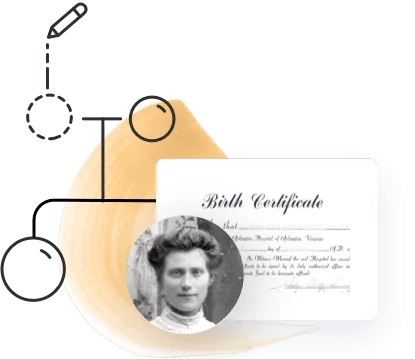
City directories were precursors to modern phone books, listing residents and businesses in a given location. They contained long lists of the people who lived in a location as well as businesses that operated there. Cities or towns would publish them every year to make note of the changes that occurred over time. Some only came out every three or five years instead. These directories were official, but they do not have the same weight or attention to detail that legal documents hold. You are more likely to find mistakes or incomplete information in them.
Although not a primary genealogical resource, they provide valuable context about occupations, neighborhoods, and communities. Predominantly helpful for research into the 19th and 20th centuries, they offer insight into the jobs available in town, companies owned by locals, neighbors and communities, and what the cities themselves were like.
Key notes about using city directories in genealogical research
- City directories included everything a phone book did before people had phones
- Marginalized communities, women, and children were often not included
- Business ownership and even advertisements can give clues about everyday life
- Grouped listings for multigenerational housing verify family relationships
What can you find in a city directory?
A city directory generally includes an alphabetical listing of all residents and businesses that live or operate in a particular location. They were the phone books before everyone had a phone number. In some ways, they were much more useful as well, especially for genealogy researchers. You can find a lot more information about individuals and the neighborhoods around them.
These records do have some drawbacks. The people included were adults, primarily men and widowed women, who owned property in most cases. Temporary renters and children were not often listed, especially if they did not stay for multiple years. In some places, the books only included white residents. The local businesses, maps, advertisements, and street guides might even convey more useful information than the simple list of names.
Specific details that city directories provide for genealogists
Alongside basic data, these often offer clues to other resources of connections that could help with genealogical research.
- Occupations and organizations: Some directories listed job titles, such as clerk, machinist, or millwright. Some included employer names. You could also find local industry or occupational groups that may offer member rosters for further research.
- Business ownership and partnerships: Listings that include proprietor or partner indicate some connection to a business in town. This sends you down a research pathway to licenses, additional tax documents, and connections with other families.
- Religious affiliation: Membership or attendance at a local church or other house of worship may show up in city directories. This can lead you to other document possibilities.
Although there were no set rules about what a city had to include, most covered the basics. If you are lucky enough to locate one with death or widowhood references, racial identifiers, or tenant and boarding house inclusion, you can find out even more information. Some even add “moved to” notes that indicate when prominent members of the community moved out, which helps you track migrations and find new resources to explore.
Where can you find historical city and town directories?
The easiest first step is to look online. Many historical city directories are available online through platforms like MyHeritage, which offers access to a wide range of historical records to enrich your family tree. You may find some options in internet archive searches or by browsing digitized scans through online image archives.
If the directories you’re looking for haven’t been digitized yet, contacting the city or town offices to ask about historical directories is a good step to take. They may have them available in a public archives. Another great in-person option is to visit the local library. Some districts have more than one physical location, so take the time to explore which is the largest or most prominent. Local historical societies can also help in some cases.
While not as direct or detailed as legal or government documents, city directories offer a lot that other options do not. These books help you discover more about where and how your family lived in years past. The realistic glimpses into things like local businesses and neighborhoods paint a fuller picture of daily life than simple names and dates ever could.
Explore city directories, guides, and references, and other historical records to uncover the everyday lives of your ancestors using MyHeritage’s extensive research tools.
FAQs on city directories in genealogy
When were city directories used? What years do they help you research?
The most common time of publication ranges from about 1860 to 1940+ before telephone use became more common in the United States. The larger the city, the greater the chance of having annual versions.
Can you trust the accuracy of the information in city directories?
While the people who made them undoubtedly tried to be accurate, they do not have the verification efforts of legal or government documents. If the only discrepancy you find is in a city directory, you might be able to dismiss it as a simple error.
Who will you not find in a city directory?
These books focused on heads of household. It was rare to find women and children included unless the woman was an independent widow. In some places, they excluded minorities of all kinds. Sometimes, borders or tenants were also excluded, although they might have been listed with ‘r’ or ‘bdr’ designations.
Can you find city directories in other countries around the world?
Yes. These were created and used in other places besides the United States. You may find city directories in Canada, the United Kingdom, Europe, and even Australia. While similar, expect some difference in format and what is included.
What information besides names and addresses can you find?
While verifying these basic details always helps with family tree research, the insight into everyday life really helps you imagine what life was like. Who was the local grocer? What shops did your ancestors visit in the neighborhood? Did they attend church or events at a fraternal organization in town? The more you explore, the better understanding you get of what life was really like for those who came before you.


